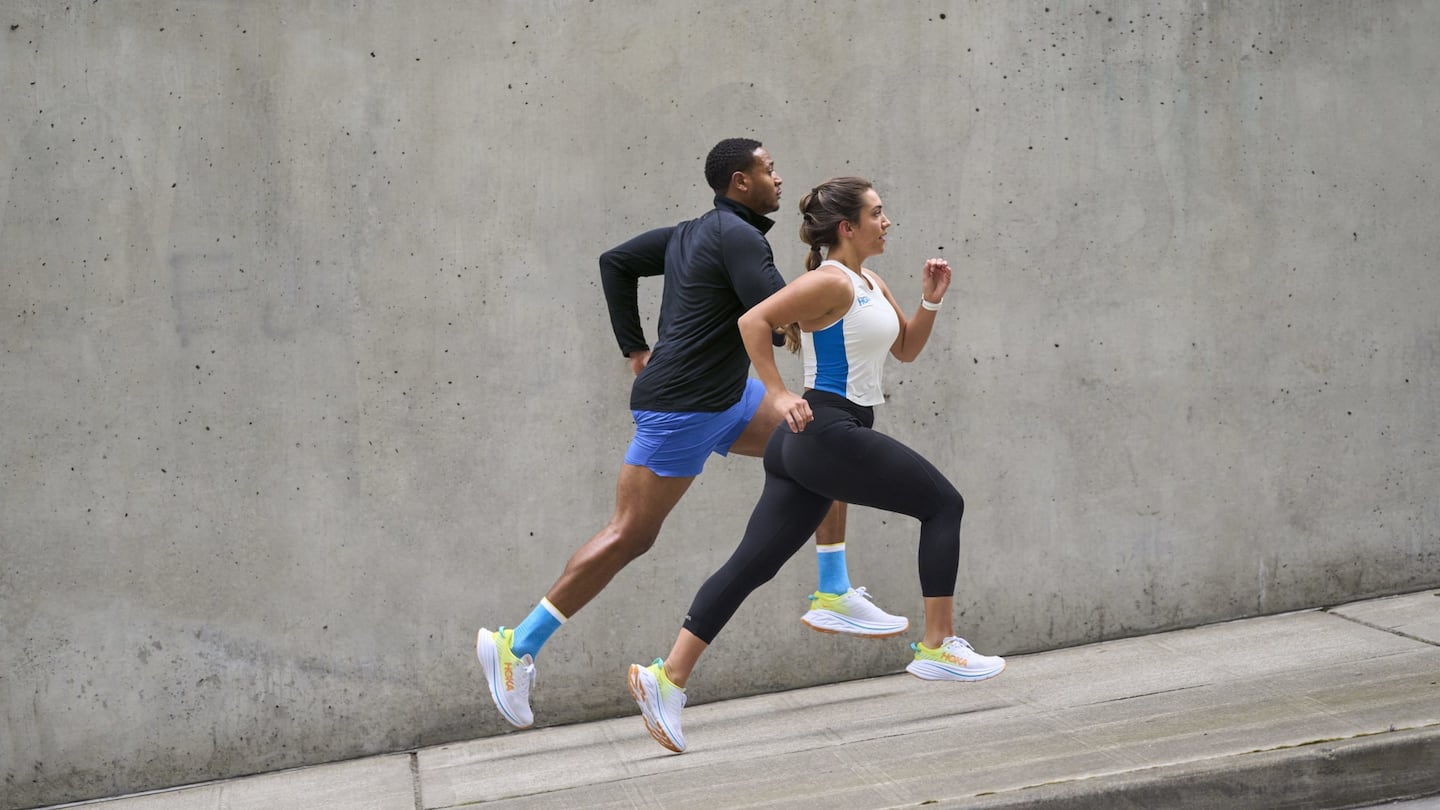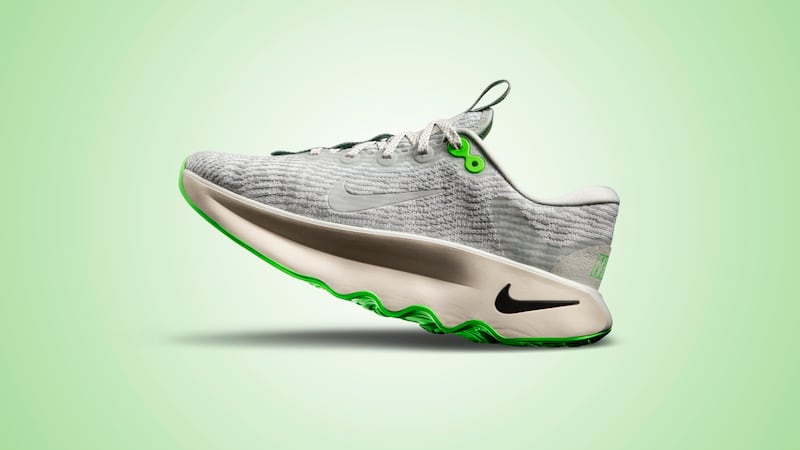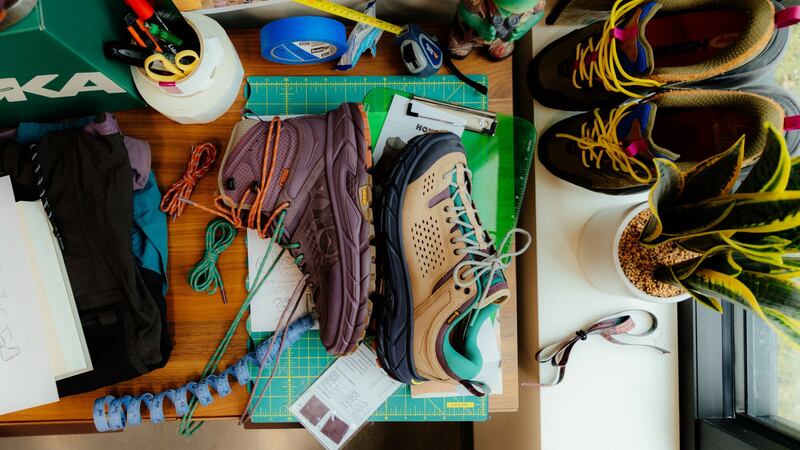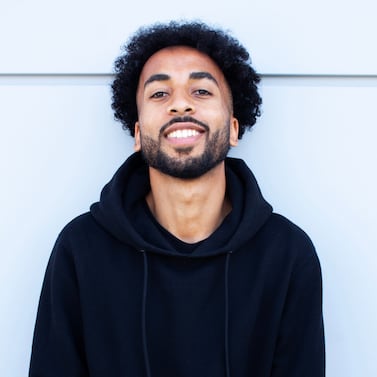
The Business of Fashion
Agenda-setting intelligence, analysis and advice for the global fashion community.

Agenda-setting intelligence, analysis and advice for the global fashion community.

When Hoka One One released a new sneaker in 2020 featuring the brand’s signature bright colours, chunky midsole and rocker heel, the website Gear Patrol asked: “What the Hell Is Going on With This Weird New Running Shoe?”
Nobody’s asking that question anymore.
The design flourishes that once drew frequent comparisons to clown shoes are now a $1.4 billion-a-year business for Hoka and its owner, Deckers. Features that were quickly adopted by an avid community of road and trail runners when the brand debuted in 2009 are now worn by plenty of non-athletes searching for a durable, multipurpose sneaker that can be worn throughout various activities during their daily life — with the added bonus of looking stylish too.
After sales soared by nearly 60 percent in 2022, many analysts expect Hoka to grow revenues comfortably beyond the company’s 20 percent growth target this year.
ADVERTISEMENT
But success breeds imitators. On, the Swiss running brand that’s had a parallel rise to Hoka, last year introduced the “Cloudmonster,” a lightweight sneaker it described as “our weirdest creation yet,” featuring a rocker heel and the brand’s largest-ever midsole. In May, Nike released its Motiva line, a shoe it touts as having an “exaggerated rocker and full-length cushioning.” Adidas’ latest Ultraboost Light running sneaker launched in February with its thickest midsole yet. The list goes on.

Hoka has had to pivot from convincing sceptical runners to wear its “clown shoes” to making the case that its rocker heel and wide midsole are better than the rest. There’s also the looming spectre of fatigue, particularly among fashion-conscious consumers, who may take the sudden ubiquity of Hoka-likes as a sign it’s time to move onto the next silhouette.
“The three core elements of our footwear made us very unique in the industry at one point, but we now have a big target on our backs,” said Colin Ingram, Hoka’s vice president of global product.
Here’s what defines a Hoka shoe, according to Ingram:
The curved “meta-rocker” sole prevents the foot from landing flat, encouraging forward propulsion. The cushioned midsole is a shock absorber, creating a foamy feel underfoot and softening the impact of landing on knees and ankles. Finally, Hoka’s footbed places the user’s foot deeper in the midsole, rather than resting on top of it, creating a secure, cushioned feeling.
“Hoka perfected soft landings,” said sporting goods analyst Matt Powell. “If I have an aggravated injury of some kind, I’m landing on something that’s softer, so it’s not going to hurt or be as jarring as if I was wearing a flatter running shoe with no cushioning at all.”
None of this was conventional wisdom when former Salomon employees Jean-Luc Diard and Nicolas Mermoud founded Hoka in 2009. Previously, the trend in road and trail running had been for brands to create as close to a barefoot feel as possible. For several years after Hoka launched, there was nothing quite like it on the market (the brand was acquired by Deckers about a decade ago and is now based in California).
“Everything was super minimal at the time Hoka entered the market,” Ingram said. “It was all about trying to get the foot as close to the ground as possible.”
ADVERTISEMENT
Today, Hoka faces challenges from most major sneaker brands, and at virtually every price point (the brand’s popular Bondi 8 model costs $165 a pair). At the high end, in February American running brand Saucony launched its $275 Endorphin Elite running sneaker with a large shock absorber midsole and a curved rocker heel. Adidas’ Ultraboost Lights cost $210, Brooks’ Caldera 6 was released last July; they cost $150. Nike’s Motiva retail for $125. Even Walmart has a chunky running shoe for under $30.
Rather than race to keep ahead of the competition, Hoka is taking the fight to them. It’s expanding into more specialty running stores as well as big chains like Foot Locker and Dick’s Sporting Goods, plus retailers like Nordstrom, Dover Street Market and Kith, where its shoes are positioned more like luxury goods alongside limited edition Nike or Adidas collaborations. Hoka collabs are becoming more frequent, and last year the brand announced tie-ups with streetwear retailers like Bodega and Atmos.

Deckers’ CEO David Powers told investors in May that many consumers still aren’t familiar with the brand in regions such as Europe, the Middle East and China, leaving plenty of room to grow. He expects Hoka to surpass $2 billion in revenue in the near future. That’s a bit behind what Converse generated last year, though well below Nike’s $46.7 billion in 2022 sales.
There are some limitations that come with the brand’s unique shoe design. Because of the height at which the foot sits in the elevated midsole, Hoka will not find it as easy to adapt its footwear for sports or activities that require lateral movement, such as tennis, Powell said. That hasn’t been a problem for On, which adapted its shoes to create a line of tennis footwear, co-designed with investor-collaborator Roger Federer.
Footwear isn’t the only category where Hoka sees a major opportunity, however. Hoka believes apparel could drive significant sales in the future. This autumn, it will launch a new line of running tops and shorts. The brand is also designing clothing that — like its shoes — can be worn for multiple purposes. A $100 women’s playsuit became one of Hoka’s top-selling items on its website when it was released earlier this year, Ingram told BoF.
Powell expects the brand will continue to benefit from being the first-mover in creating a new generation of running footwear.
“I think they’re further ahead in the marketplace than everybody else,” he said. “So far, no one’s been able to put a dent in Hoka yet.”
Brands, retailers and investors are betting on trail running, the fast-growing endurance sport, to become activewear’s next big category.
On hasn’t taken long to turn its unconventional performance-running shoes into one of the world’s most recognisable footwear brands. The Swiss company, launched in 2010, has won credibility with the running elite while cultivating a loyal fashion fanbase, with support from tennis star Roger Federer.
Nike and On are dominating the sneaker category today thanks to their focus on performance-driven products and discipline in their direct channels.

Daniel-Yaw Miller is Senior Editorial Associate at The Business of Fashion. He is based in London and covers menswear, streetwear and sport.
Antitrust enforcers said Tapestry’s acquisition of Capri would raise prices on handbags and accessories in the affordable luxury sector, harming consumers.
As a push to maximise sales of its popular Samba model starts to weigh on its desirability, the German sportswear giant is betting on other retro sneaker styles to tap surging demand for the 1980s ‘Terrace’ look. But fashion cycles come and go, cautions Andrea Felsted.
The rental platform saw its stock soar last week after predicting it would hit a key profitability metric this year. A new marketing push and more robust inventory are the key to unlocking elusive growth, CEO Jenn Hyman tells BoF.
Nordstrom, Tod’s and L’Occitane are all pushing for privatisation. Ultimately, their fate will not be determined by whether they are under the scrutiny of public investors.